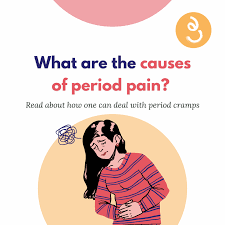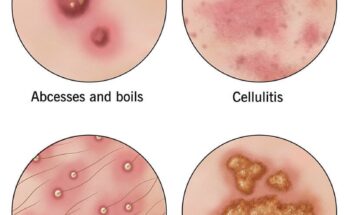Menstrual cramps, medically known as dysmenorrhea, are a common challenge for many individuals during their reproductive years. While they are a natural part of the menstrual cycle, the intensity and effects of cramps vary widely. Let’s dive into what they are, their causes, and how to manage them effectively.
What Are Menstrual Cramps?

Menstrual cramps refer to the throbbing or cramping pain in the lower abdomen that many experience just before and during their period. They occur when the uterus contracts to shed its lining, a process driven by hormone-like substances called prostaglandins.
Types of Menstrual Cramps
- Primary Dysmenorrhea: This is the most common type, caused by natural uterine contractions and usually starts a day or two before menstruation.
- Secondary Dysmenorrhea: Linked to underlying medical conditions like endometriosis, fibroids, or pelvic inflammatory disease (PID).
Is It Normal to Have Menstrual Cramps?
Mild to moderate cramps are a normal part of menstruation. However, severe pain that interferes with daily activities may indicate a medical issue and should be evaluated by a healthcare provider.
Symptoms and Causes
Symptoms:
- Dull or throbbing pain in the lower abdomen
- Radiating pain to the lower back and thighs
- Nausea, diarrhea, or dizziness (in severe cases)
Causes
- High levels of prostaglandins
- Hormonal imbalances
- Medical conditions like endometriosis or fibroids
Why Are Period Cramps So Painful?
Painful cramps often result from excessive prostaglandins, leading to stronger uterine contractions. These contractions can temporarily restrict blood flow to the uterine lining, intensifying the pain.
Who Is More Likely to Have Menstrual Cramps?
- Adolescents and young adults (typically before age 25)
- Individuals with a family history of painful periods
- Smokers or those who consume excessive alcohol
- People with heavy or irregular periods
Can There Be Complications from Painful Periods?
Yes, especially in cases of secondary dysmenorrhea. Conditions like endometriosis, untreated infections, or fibroids can lead to infertility, chronic pelvic pain, or other health concerns if not managed properly.
How to Differentiate Between Normal Cramps and Dysmenorrhea
- Normal cramps: Mild to moderate pain that subsides with over-the-counter medication or rest.
- Dysmenorrhea: Severe, debilitating pain often accompanied by heavy bleeding, nausea, or fainting.
Management and Treatment
- Medication: Over-the-counter pain relievers like ibuprofen are commonly effective.
- Lifestyle Changes: Regular exercise, a balanced diet, and stress management can reduce cramp severity.
- Hormonal Therapies: Birth control pills or hormonal IUDs may regulate periods and alleviate pain.
Other Ways to Reduce Menstrual Cramps
- Applying heat packs to the lower abdomen
- Staying hydrated
- Avoiding caffeine and salty foods during your period
- Practicing yoga or meditation
Alternative Therapies for Menstrual Cramps
- Acupuncture: Promotes blood flow and reduces inflammation.
- Herbal Supplements: Certain herbs, like ginger and fennel, can alleviate symptoms.
- Aromatherapy: Essential oils like lavender may provide relaxation and pain relief.
Stem Cell Therapy: A Promising Treatment for Menstrual Pain
Stem cell therapy is an innovative approach that uses the body’s regenerative cells to treat severe menstrual pain caused by conditions like endometriosis or fibroids. These cells reduce inflammation, repair damaged tissues, and improve blood flow, addressing the root causes of pain.
How It Works
- Stem Cell Collection: Harvested from bone marrow or fat tissue.
- Processing: Purified and prepared.
- Injection: Delivered to affected areas for healing.
Benefits
- Minimally invasive
- Long-lasting relief
- Fewer side effects
While research is ongoing, stem cell therapy holds promise for those with chronic menstrual pain resistant to traditional treatments. If you’re exploring advanced options, consult a specialist to see if it’s right for you.
Introducing SPIDEX20: Stem Cell Treatment for Menstrual Cramps

SPIDEX20 is a specially formulated treatment designed to provide fast and effective relief from menstrual pain. With a unique blend of natural and clinically-proven ingredients, SPIDEX20 works by targeting the root causes of cramps, reducing inflammation, and promoting muscle relaxation.
Whether you’re dealing with mild discomfort or severe cramps, SPIDEX20 is a reliable option to help you regain control of your day.
Conclusion
Menstrual cramps can be a challenging experience, but they are manageable with the right strategies. Understanding the causes and adopting effective treatments like SPIDEX20 can make a significant difference. If your cramps are severe or unusual, don’t hesitate to consult a healthcare provider to rule out underlying conditions.
Your health and comfort are worth every effort. Take charge of your menstrual health today!



